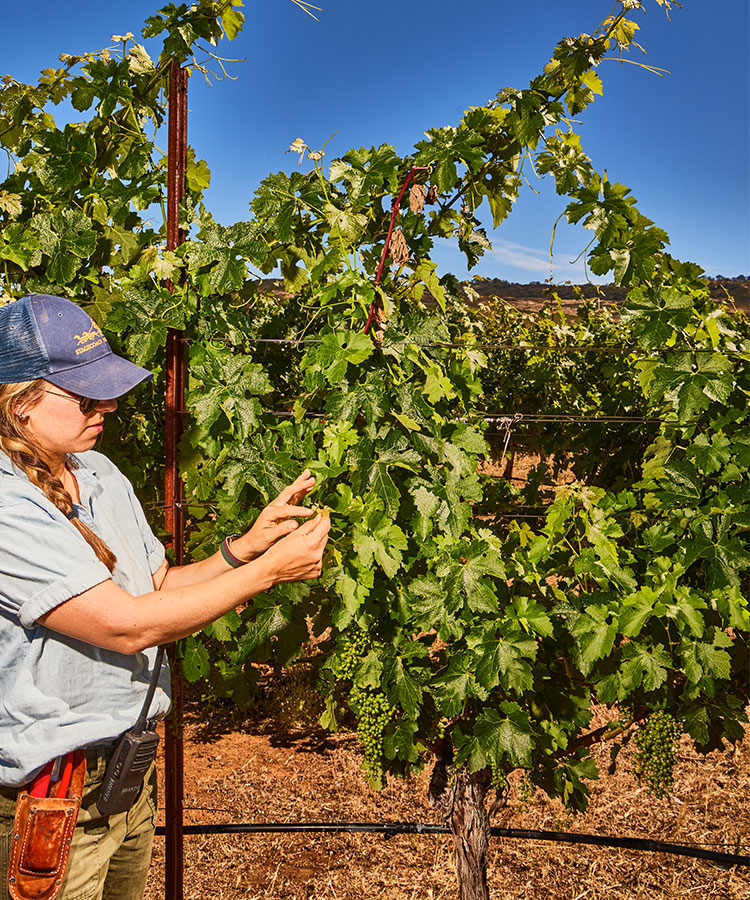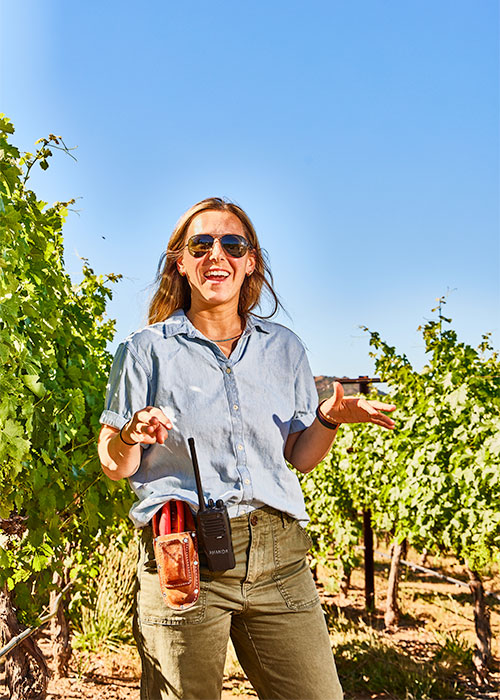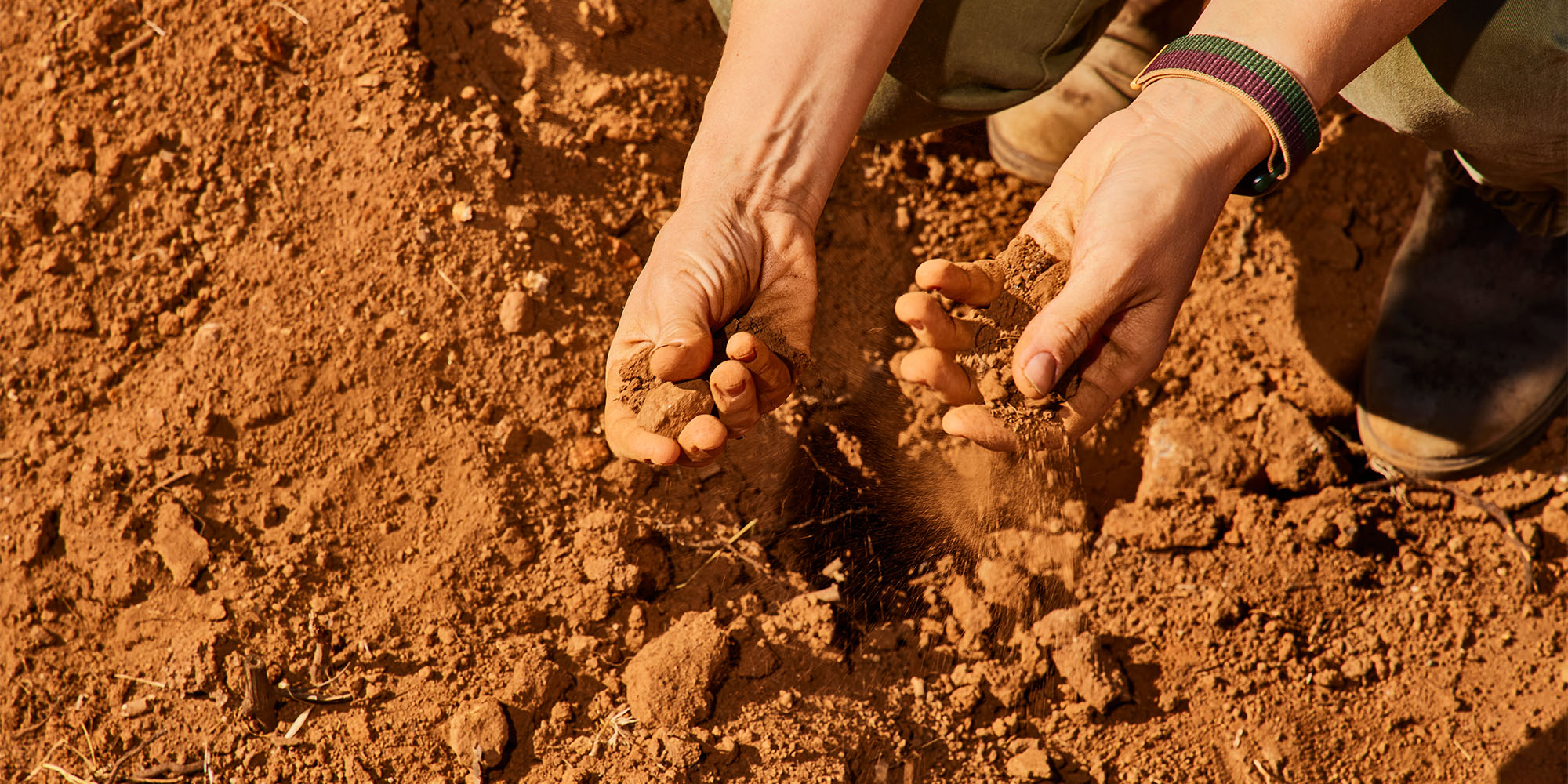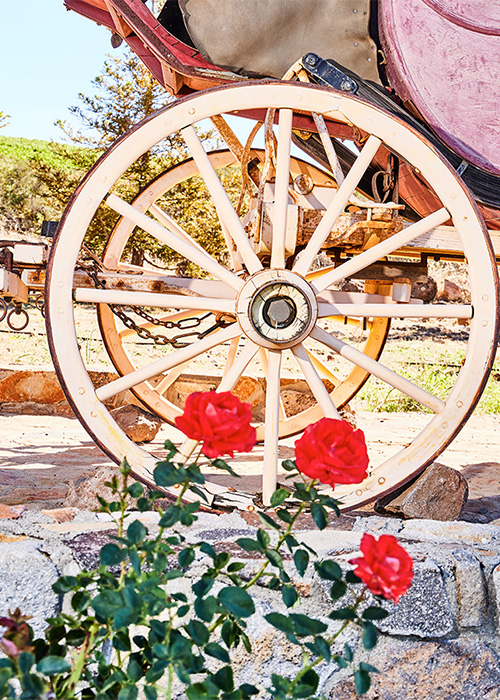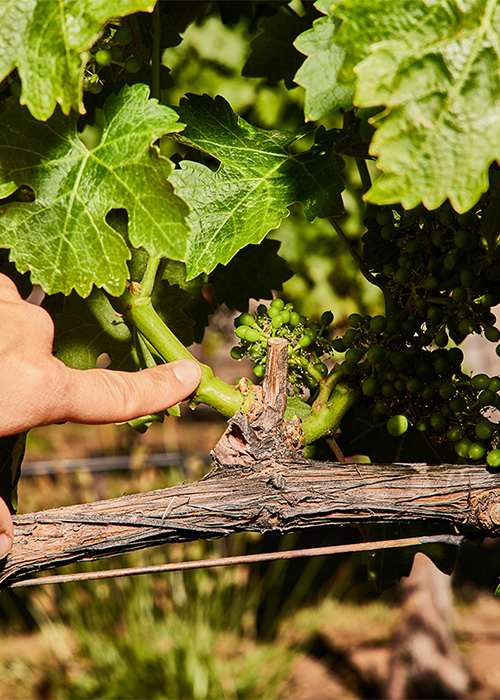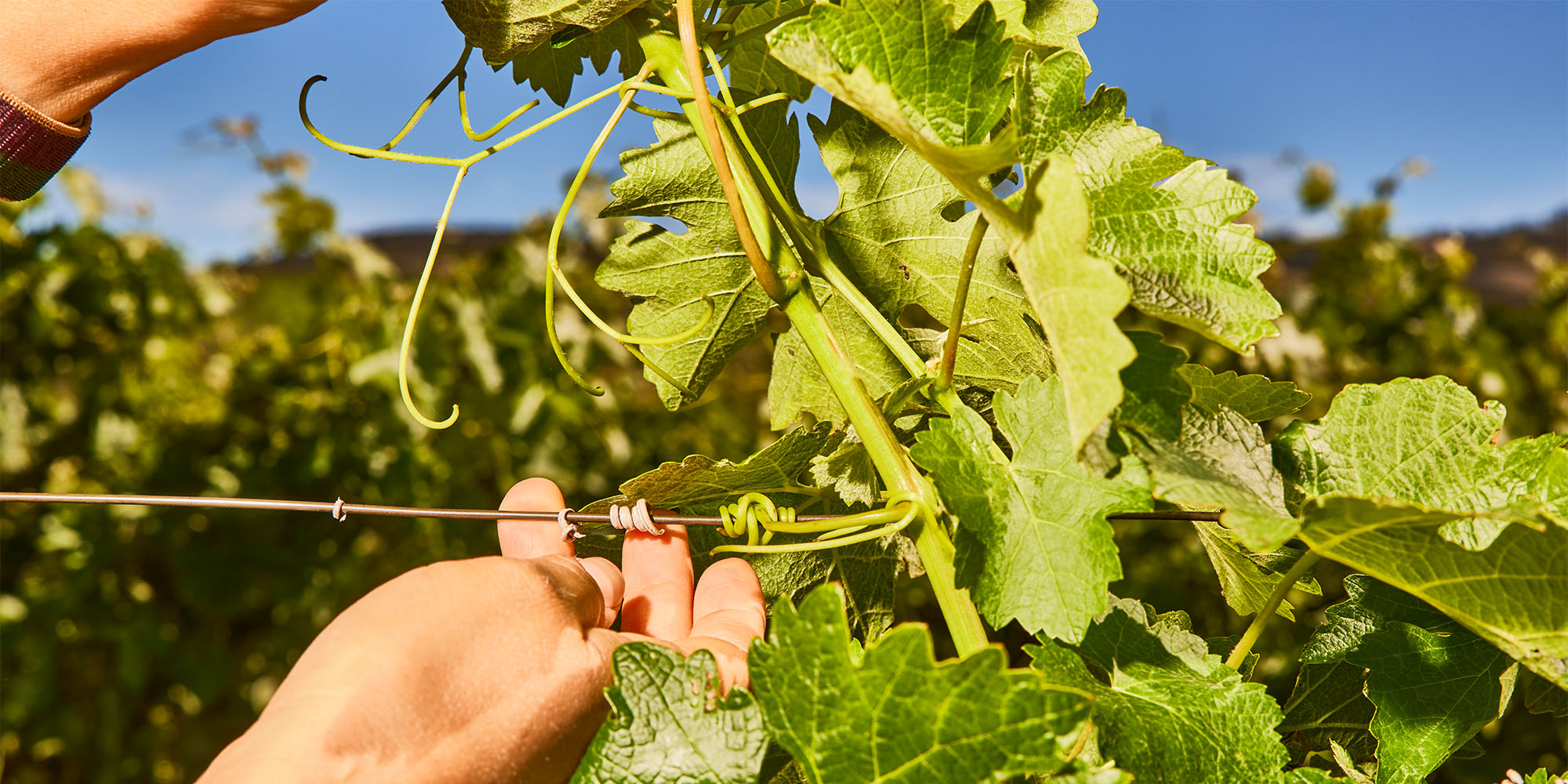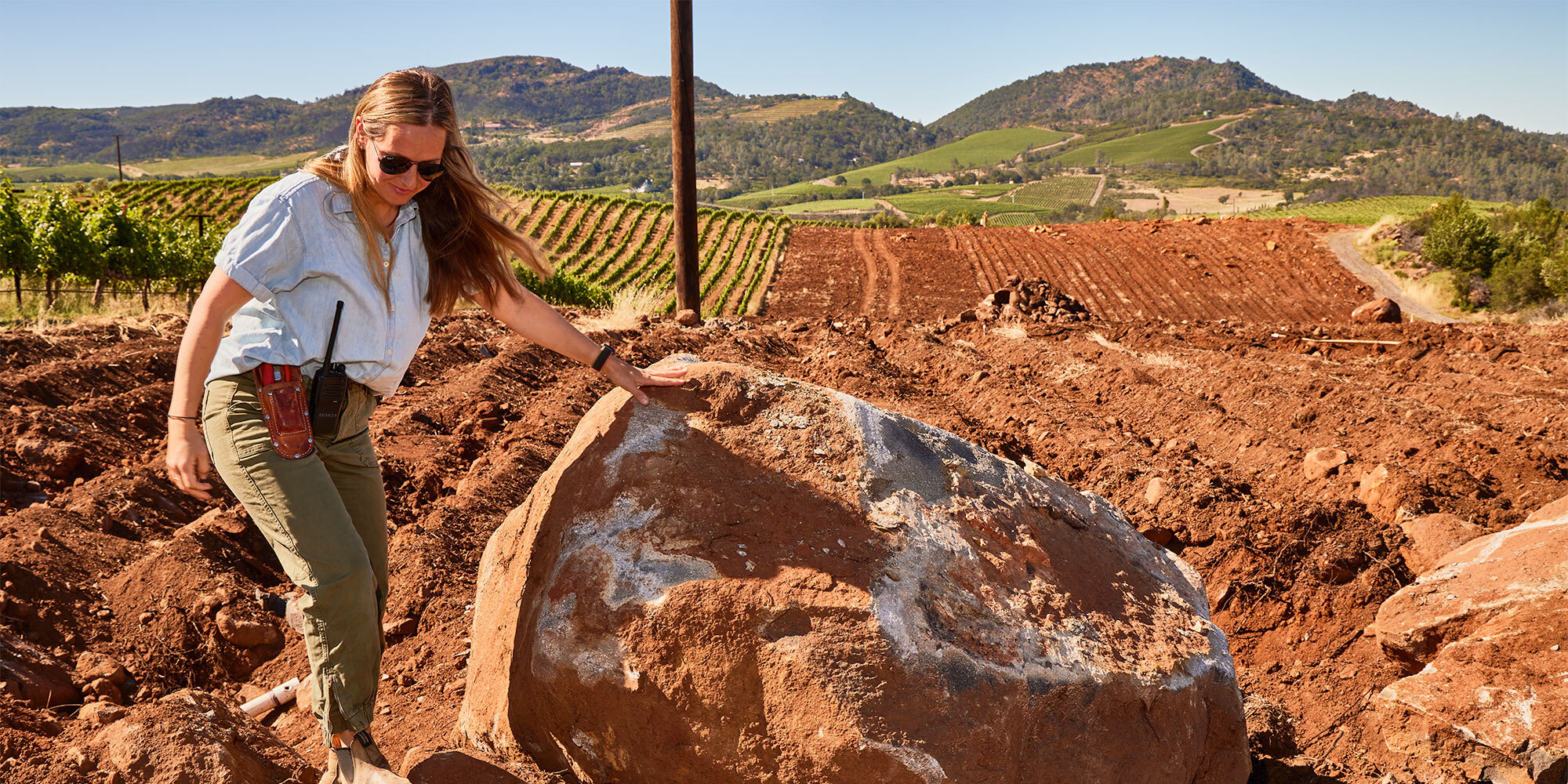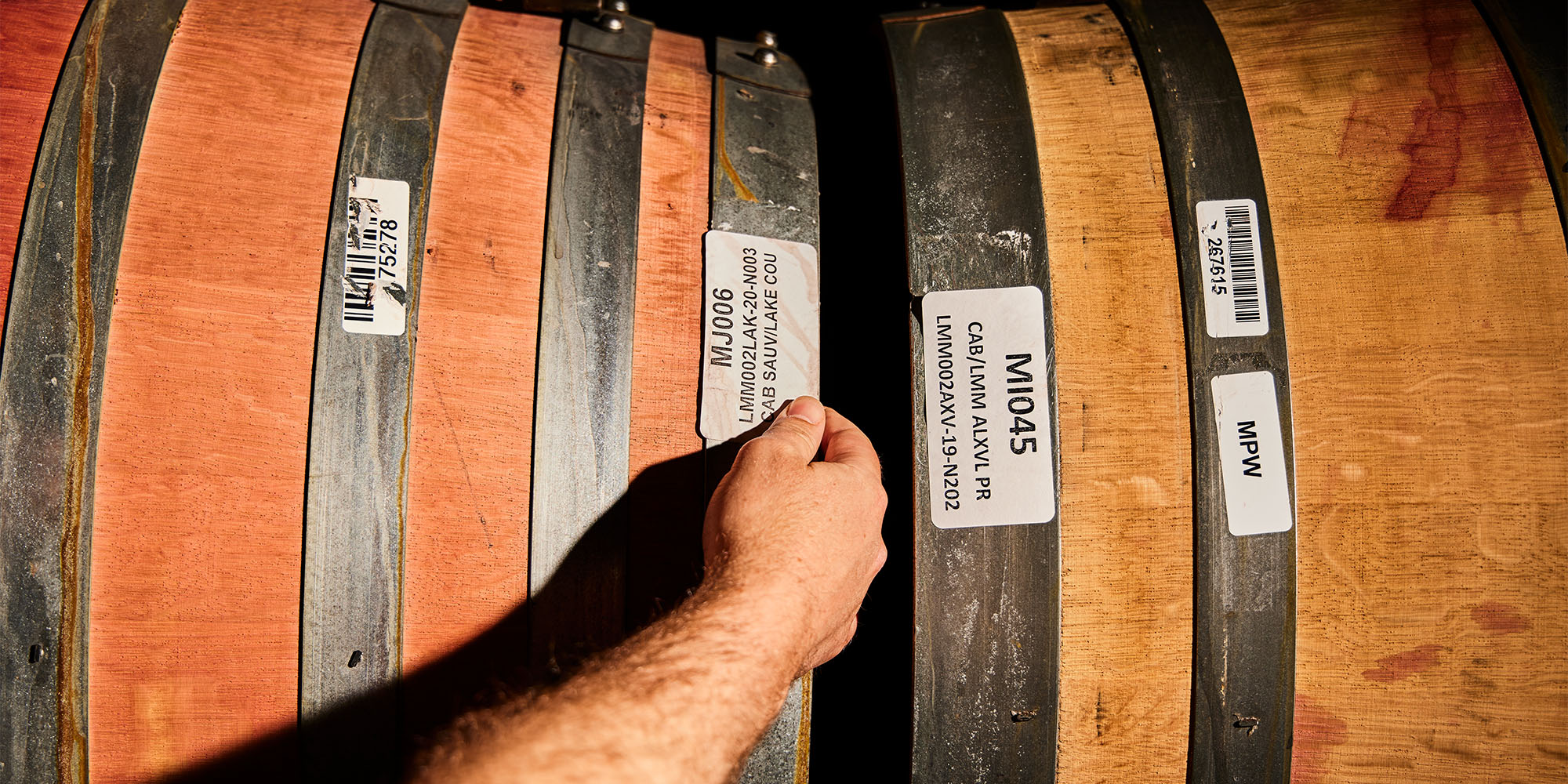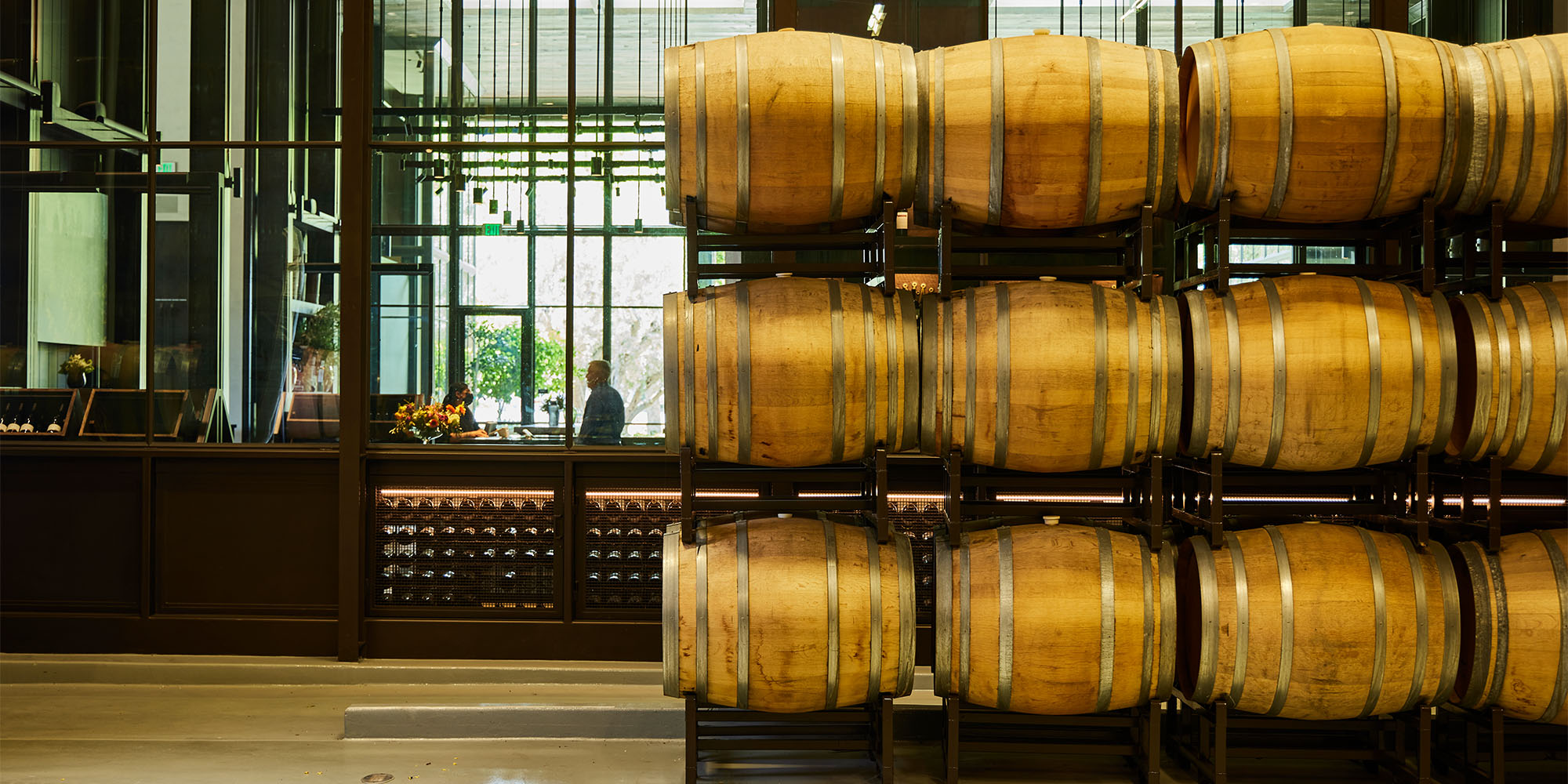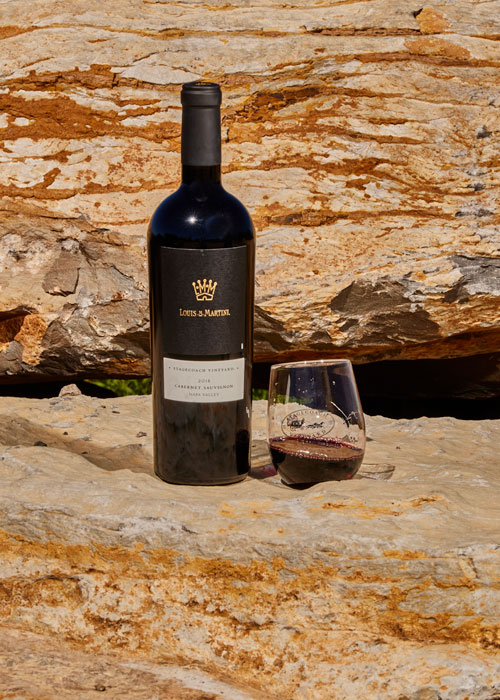
The vintners at Louis M. Martini Winery are making some of Napa Valley’s best, most sought-after Cabernet Sauvignon and other red varieties. I spent a day with growers and winemakers and learned the process behind their incredible wine, from soil to glass. The adventure included a trip to the historic Stagecoach Vineyard, which produces the grapes for some of California’s best vintages. Not only was I granted an inside perspective on making great wine, but also a glimpse at the history that permeates every inch of the vineyards.
Exploring Atlas Peak
We start our day at Stagecoach Vineyard, which has 604 planted acres on Atlas Peak, the highest-elevation appellation in Napa. When Dr. Jan Krupp, Stagecoach’s original owner, bought the property, locals called it an impossible task to cultivate vines there. The terrain was so rugged that there wasn’t even a road, which Krupp had to build himself, or a well for water, which took many tries drilling hundreds of feet into the earth to find.
In the vineyard, it’s windy and hot, but that’s a good thing. Less water means low-vigor vines, which make the best fruit. Later, the hot day will give way to a chilly night, and the temperature shift will allow the grapes to maintain a higher acidity and eventually produce a more well-balanced wine than if the grapes were grown in a location with a steadier temperature throughout the day and night.
From the highest point in Stagecoach, it’s truly stunning. To make space for the vineyard, more than 1 billion pounds of volcanic rocks had to be removed. I stood on a huge boulder overlooking Atlas Peak and the valley below with a glass of Martini’s Stagecoach Cabernet in hand. The scene was breathtaking: I could see San Francisco Bay and the Golden Gate Bridge from my perch.
The Role of the Soil
The vineyard’s elevation, which sits between 1,100 and 1,700 feet high, helps produce fruit that makes some of Martini’s incredible, small-batch Stagecoach Cabernet, a staple in the winery’s Crown Cabernet Collection. The soil at that elevation tends to have fewer nutrients, so the vines produce lower-yield harvests of smaller berries. That means they produce concentrated juice with a rich depth of flavor. “Lower yields, smaller berries, higher concentration, less water,” says Amanda Cihlar, winery relations and vineyard manager at Stagecoach. “They’re all things that make for really great wine.” Holding those tiny grapes in my hand, it all seemed so simple — but really there’s a crew that works year-round, tending to the vines at every stage.
A Reminder of Napa Valley’s History
There’s also an authentic Wells Fargo stagecoach in the vineyard, which is nearly 140 years old and carried settlers westward during the Gold Rush. “We wanted to bring it out here to tell the story of some of the first settlers to ever cross this land,” Cihlar says, “because this coach very well could have brought them here.” I climbed onto the platform where the stagecoach is displayed and peeked inside, imagining what a dusty, uncomfortable ride that must have been, and how rewarding stepping out into Napa Valley must have felt.
Tending to the Grapes
It’s June when I visit. Though the grapes have already started growing, they won’t be ready for a few more months. Right now, the priority is ensuring that the grapes receive the right amount of sun exposure. By carefully pruning the surrounding leaf canopy, the amount of sun and shade can be perfectly controlled. Remove too many leaves, and the grapes will burn – they get sunburned just like skin does. Remove too few, and they won’t ripen as fully. As they develop, the red varietal grapes will turn purple and black, and the white varietal grapes will turn golden — but right now, they’re all green.
Harvest Season
Stagecoach Vineyard has 16 different grape varieties, everything from Chardonnay to Cabernet Franc and Malbec. That means harvest lasts from August through late October, depending on which grapes are at peak ripeness. In October, Cihlar says, Stagecoach harvests 100 tons a day. Depending on the kind of grape and what the winemakers want, they can go into larger bins or half-sized bins that put less pressure on the grapes and keep the fruit perfectly intact.
Putting Down Roots
Stagecoach is redeveloping a block of vines. They’re clearing out the old vines and removing some of the larger boulders from the soil, which can reach down as far as 30 feet. Next year, they’ll plant vines and allow them to root. “There won’t be any fruit on the vine in that first year,” Cihlar says. “Then in the second year there will be some fruit, but we drop it because we want the vine to focus on establishing its root system. We don’t want it to focus its energy on the crop.” What struck me most was how red the mineral-rich soil is because of the iron deposits in the earth.
Production in St. Helena
Once the grapes are harvested from the vineyards, like Stagecoach and the historic Monte Rosso vineyard, it’s time to start making the wine. The grapes all come back to the production facilities on the Louis M. Martini property in St. Helena, the same place where the tasting room is. Many of those grapes go into large-volume production for the wines that Martini distributes nationally, but others are reserved for a different destination: Cellar 254.
Where the Magic Happens
“People see Louis M. Martini in their local fine wine bottle shop but there’s this whole other world of wines that I’m crafting that they don’t get exposed to,” says winemaker Michael Eddy. He crafts those wines in Cellar 254, the winemaker’s playground at Martini. There, Eddy and his team use specific blocks of grapes, harvested at scientifically precise times, to make limited-production wines like the Crown Cabernet Collection and Lot 1, Martini’s premier bottle, which was awarded 100 points by Robert Parker at Wine Advocate for its 2013 vintage.
Aged to Perfection
Once the wines have been barreled, they need to be left alone to age in Martini’s barrel room. In the 2019 reimagining of Louis M. Martini’s tasting room facility, the winery built the barrel room with a sort of observation deck for visitors. One massive glass wall separates the developing wines from the Crown Bar tasting room. Not only can you taste the finished products in the glass, but you can also see the winemaking happening at the same time. In front of the glass wall are expansive display cases with pieces of Martini’s winemaking history in Napa Valley.
Education Only Adds to the Experience
Call me crazy, but I think a deeper understanding of wine makes it taste better. Knowing what’s happening in the glass, and what went into getting it there, only adds to the experience. “The person that I’m most excited about is that person who has some base knowledge of wine, but really wants an experience that’s going to educate them on their journey to understand a little bit more about the wines they enjoy,” Eddy says. “But they also want to do so in an environment that isn’t pretentious, that isn’t going to shame them for not knowing things. An environment that’s inviting and comfortable and supportive.”
An environment that is made even better with exceptional wines, people who genuinely appreciate what goes into each bottle, and a gorgeous setting in Napa Valley. An environment, perhaps, just like Louis M. Martini Winery.
Book your visit to Louis M. Martini today!
This article is sponsored by Louis M. Martini Winery.

